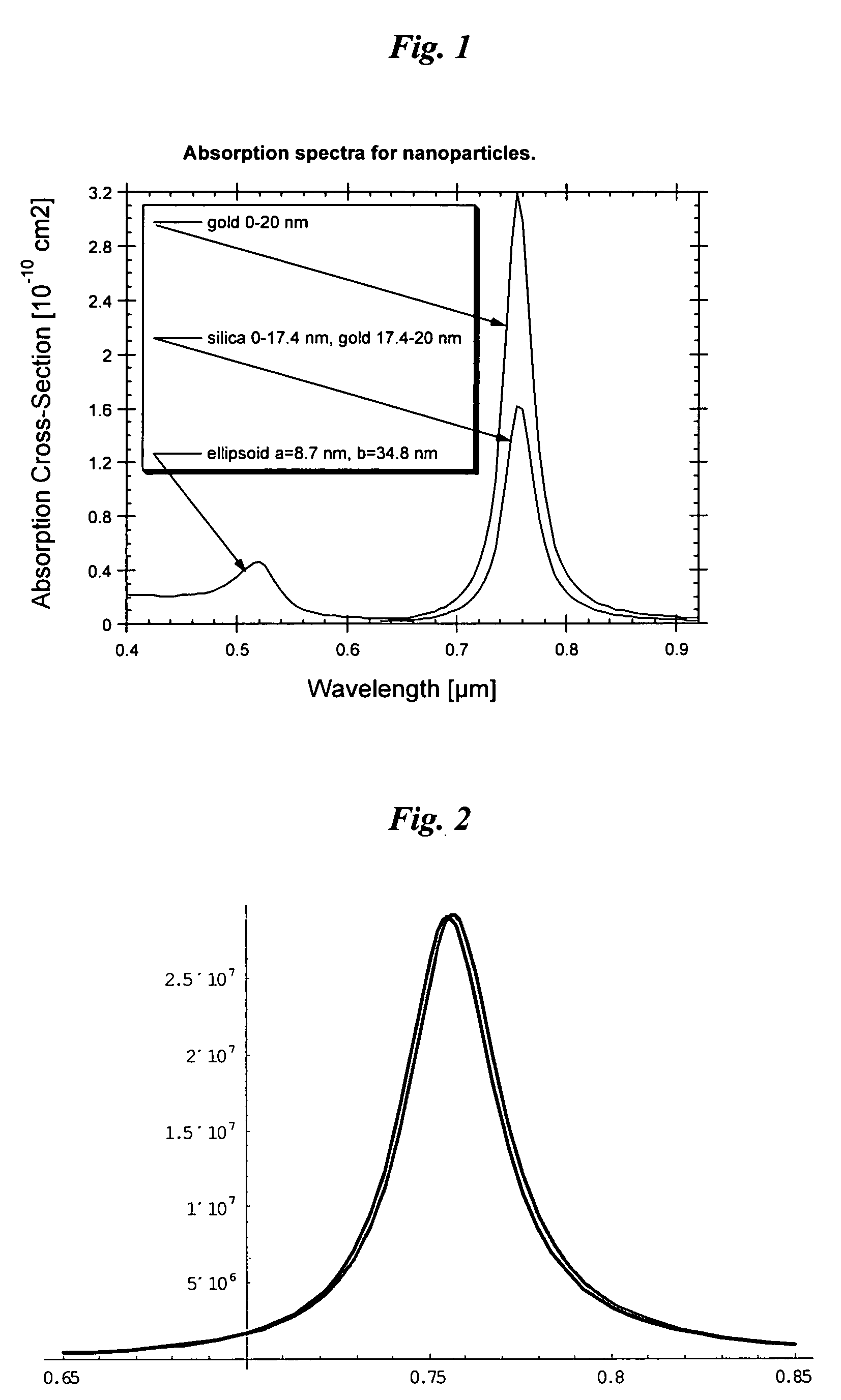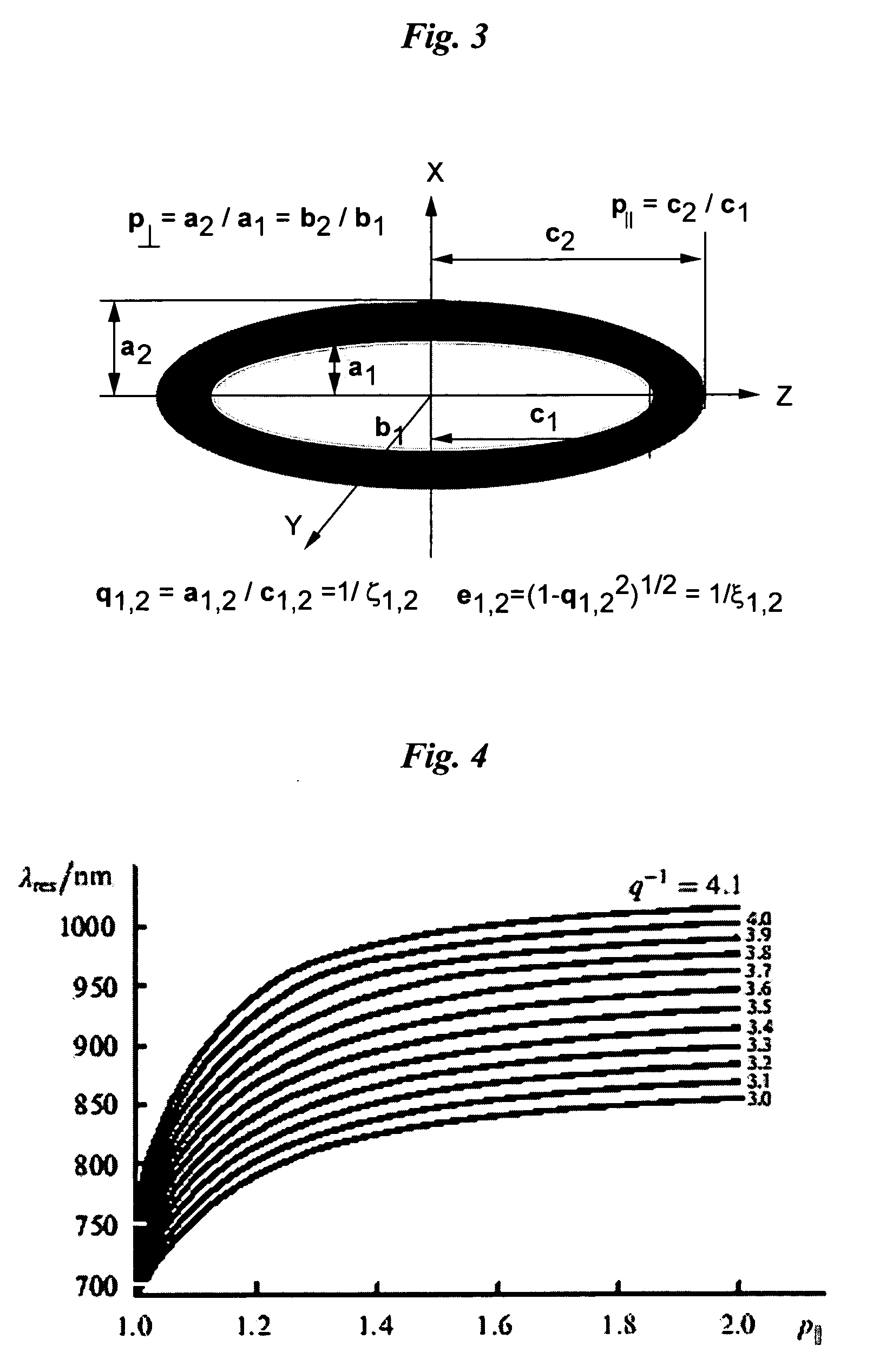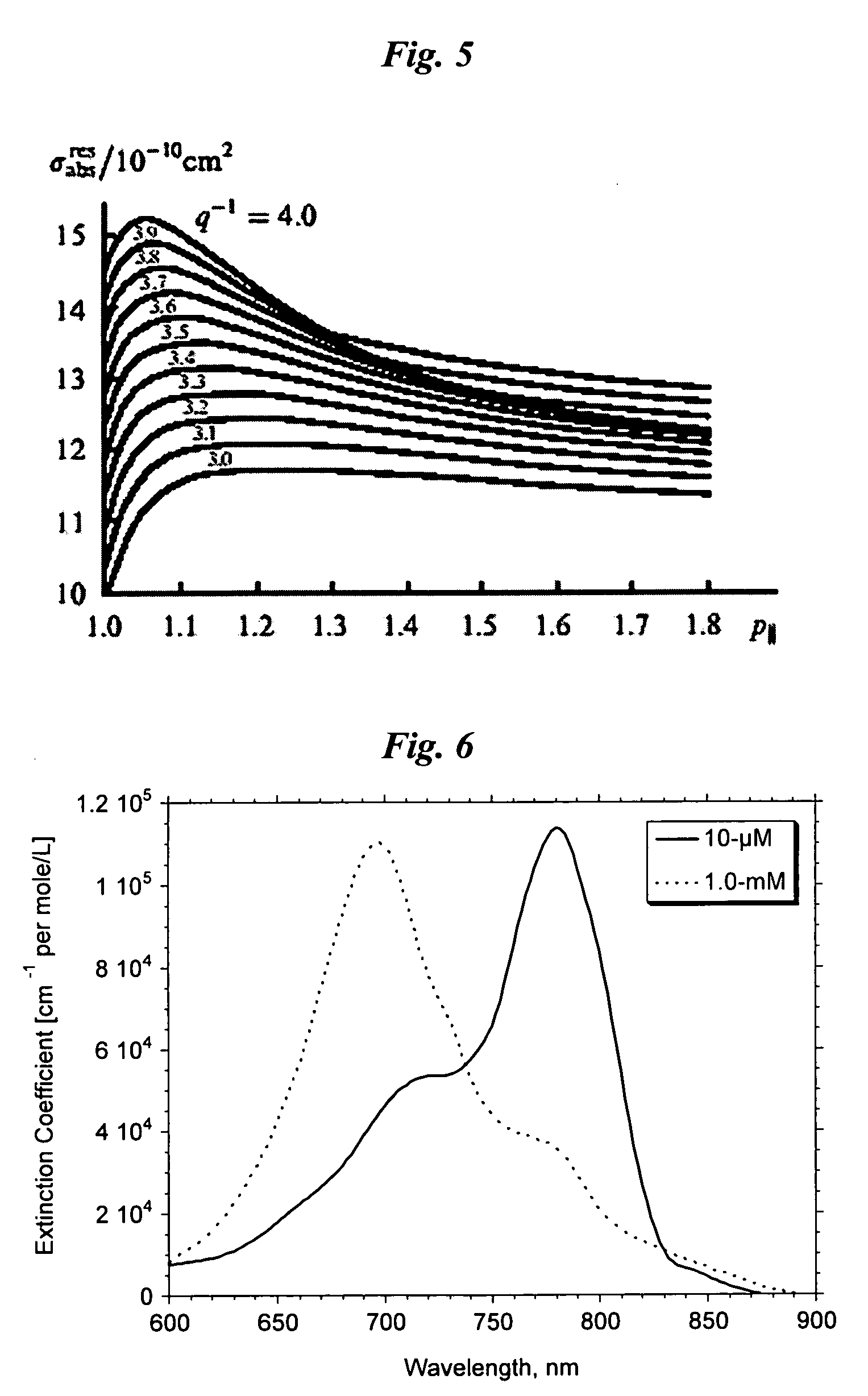High contrast optoacoustical imaging using nonoparticles
a non-oparticle, optoacoustic imaging technology, applied in the field of optoacoustic imaging, can solve the problems of inability to recognize tumor masses, low image resolution, and inability to achieve tumor masses, so as to accelerate the passage of nanoparticles, enhance the uptake of contrast agents, and slow the chemical degradation of components
- Summary
- Abstract
- Description
- Claims
- Application Information
AI Technical Summary
Benefits of technology
Problems solved by technology
Method used
Image
Examples
example i
Optical Absorption Spectra of Metal Nanoparticles
[0214] To calculate the intensity and resonance absorption of an ellipsoid metal nanoparticles (NP) with radii, a and b and length, c, it is necessary to know the amplitude of an electromagnetic field inside the NP. When the wavelength is significantly longer than the linear dimensions of NP, the E-field components, Ek, inside the NP can be expressed in terms of the external field, E0k, incident upon metal NP as taught by Papavassilliou-1980, who provided details to a classical electromagnetic theory described by Stratton-1941: Emk=ɛ0(ɛm-ɛ0)Pk+ɛ0E0k(1)[0215] where εm=εm+iεm is the dielectric constant of the metal, from which NP is fabricated, ε0 is the dielectric constant of the surrounding medium (usually can be taken with properties of water). It is assumed that the axes x, y, z are directed along the NP axes. The quantity Pk {k=x,y,z} is called the depolarization factor along axes x, y, z is determined by the integral: Pk=12...
example ii
Enhancement of Optoacoustic Signal at 532 nm with Contrast Agents Made of Metallic Nanoparticles.
[0237] If the optical fluence exceeds the threshold of phase transition for a substance covering the nanoparticles (let us for the purpose of this example assume that the substance surrounding nanoparticles is water) the amplitude of the optoacoustic signal can be increased one order of magnitude or more. Let us assume that the temperature of the nanoparticle and surrounding water comes to boiling point at some moment tev in a course of the laser pulse. A thin vapor layer may be generated around the particle heated above 100° C., or water may occur in the superheated steady state. Due to lower heat conductivity of vapor compared to that of water, the temperature of the particle may continue to increase in the course of laser pulse with fluence exceeding the threshold. After the end of the laser pulse the particle temperature relaxes to the initial value due to heat flux from the partic...
example iii
Optoacoustic Biosensor for Detection of Biological Warfare
[0251] Optoacoustics technique that employs laser pulses for spectrally selective excitation of multicomponent medium and detection of resulting acoustic waves is well known for its exceptional sensitivity in measuring small concentration of molecules in liquids and gases (Tam, 1986; Zharov and Letokhov, 1984). The method of optoacoustic tomography developed by Oraevsky et al (U.S. Pat. No. 5,840,023) permits sensitive detection, high contrast visualization and diagnostics of early malignant tumors in human organs (Oraevsky 1994, 1996, 2000, 2002). We teach here that resolution and sensitivity of this method can be further enhanced through selective administration of non-spherical gold nanoparticles into the volume of diagnostic interest. Gold nanoparticles help to dramatically enhance the optoacoustic contrast, since they can be designed to strongly absorb laser radiation in the near-infrared spectral range and, being heat...
PUM
| Property | Measurement | Unit |
|---|---|---|
| wavelength | aaaaa | aaaaa |
| aspect ratio | aaaaa | aaaaa |
| size | aaaaa | aaaaa |
Abstract
Description
Claims
Application Information
 Login to View More
Login to View More - R&D
- Intellectual Property
- Life Sciences
- Materials
- Tech Scout
- Unparalleled Data Quality
- Higher Quality Content
- 60% Fewer Hallucinations
Browse by: Latest US Patents, China's latest patents, Technical Efficacy Thesaurus, Application Domain, Technology Topic, Popular Technical Reports.
© 2025 PatSnap. All rights reserved.Legal|Privacy policy|Modern Slavery Act Transparency Statement|Sitemap|About US| Contact US: help@patsnap.com



